Premium Only Content

Israel/Gaza: The Masks Come Off in American Society - Ron Unz
I think the striking events we have witnessed in American society over the last few months—and especially the last few days—are best understood if we consider a shrewd observation widely misattributed to Voltaire:
To learn who rules over you, simply find out who you are not allowed to criticize.
From the years of my childhood I’d always been aware that political activism and protests were a regular feature of college life, with the 1960s movement against our Vietnam War representing one of its peaks, an effort widely lauded in our later textbooks and media accounts for its heroic idealism. During the 1980s I remember seeing a long line of crudely constructed shanties protesting South African Apartheid that spent weeks occupying the edges of the Harvard Yard or perhaps it was the Stanford Quad, and I think around the same time other shanties and protesters at UCLA maintained a long vigil in support of the Jewish Refuseniks of the USSR. Political protests seemed as much a normal part of college years as final exams and had largely replaced the hazing rituals and wild pranks of traditional fraternities, which were increasingly vilified as politically incorrect by hostile social censors among the students and faculty.
Over the last decade or so, the Black Lives Matter movement raised such nationwide protests by college students to new heights, both on and off campus, often involving large marches, sit-ins, or vandalism, and this may have been propelled by the increasing influence of smartphones and social media. Meanwhile, the mainstream media regularly praised and promoted this “racial justice movement,” which reached its sharp peak following the death of George Floyd in the summer of 2020. That incident triggered a massive wave of generally youthful political protests, riots, and looting that engulfed some 200 cities across America, the worst urban unrest since the late 1960s. But unlike that earlier era, most of our establishment media and political class fiercely denounced any suggestions that the police be deployed to quell the violence. Indeed, in many or most cases local law enforcement stood down and did nothing, even as some of their political masters loudly raised the outcry “Defund the Police!”
During those years many universities became heavily caught up in such controversies. Yale renamed its Calhoun residential college in early 2017 and the list of name changes due to the 2020 George Floyd protests is so long that it has its own Wikipedia page, a list that included some of our most storied military bases such as Ft. Bragg and Ft. Hood. Verbal or even physical attacks against the symbols and statues of America’s most famous presidents and national heroes became quite common and were often favorably reported in the media, with George Washington, Thomas Jefferson, Abraham Lincoln, Theodore Roosevelt, Woodrow Wilson, and Christopher Columbus all being vilified and denounced, sometimes with elite endorsement. A lead opinion piece in the New York Times called for the Jefferson Memorial to be replaced with a towering statue of a black woman while one of the regular Times columnists repeatedly demanded that all monuments honoring George Washington should suffer a similar fate. Many observers argued that America almost seemed to be undergoing its own version of the Chinese Cultural Revolution amid widespread claims that much of our entire historical past was irretrievably tainted and therefore had to be expunged from the public square.
Most of these political protests, especially those on college campuses, were widely hailed by those holding the media megaphones as signifying one of the greatest virtues of American democracy. The many elite defenders of such social and cultural upheavals argued that these events demonstrated the great strength of our society, which freely allowed the fiercest public attacks against our most sacred national icons and heroes. Americans accepted the sort of searing self-criticism that would surely be permitted almost nowhere else in the world.
That long history of permitting or even glorifying public protests against perceived injustices had naturally been absorbed and taken to heart by the young college students who began their classes in September 2023. Then within weeks, a remarkably daring surprise raid by the Hamas militants of long-besieged Gaza caught the Israelis napping and surmounted the high-tech defenses that had cost perhaps a half-billion dollars to construct. Many hundreds of Israeli soldiers and security officers were killed along with similar numbers of civilians, with most of the latter probably dying from the friendly-fire of Israel’s own panic-stricken and trigger-happy military units. Some 240 Israeli soldiers and civilians were captured and taken back to Gaza as prisoners, with Hamas hoping to exchange them for the freedom of the many thousands of Palestinian civilians who had been held for years in Israeli prisons, often under brutal conditions.
As usual, our overwhelmingly pro-Israel mainstream media portrayed the attack in extremely one-sided fashion, devoid of any historical context, a pattern that had been followed for three generations. As a result, Israel received an enormous outpouring of public and elite sympathy as it mobilized for a retaliatory attack against Gaza. Within days, our own Secretary of State Antony Blinken flew to Israel declaring that he came “as a Jew” and pledging America’s unwavering support in that moment of crisis, sentiments completely echoed by President Joseph Biden and his entire administration. But the Hamas fighters and their Israeli captives were hidden in a network of fortified tunnels and rooting them out might produce heavy casualties, so Israeli Prime Minister Benjamin Netanyahu and his advisors decided upon a different strategy.
Instead of attacking Hamas, Netanyahu took advantage of the wave of global sympathy by unleashing an unprecedented military assault against Gaza’s more than two million civilians, apparently intending to kill huge numbers of them and drive the remainder into Egypt’s Sinai desert, allowing Israel to annex their territory and resettle it with Jews. Soon afterward, the Israeli government began distributing assault rifles to the Jewish Settlers of the West Bank, ordering some 24,000 of those automatic weapons for that purpose. Putting such armaments into the hands of religious fanatics would surely lead to local massacres and these might provide an excuse for driving all those millions of Palestinians over the border into Jordan. The ultimate result would be the creation of a racially-pure Greater Israel stretching “From the River to the Sea,” the longstanding dream of the Zionist movement. So if he were successful, Netanyahu’s place in Jewish history might become a glorious one, with his many venal sins and blunders easily overlooked.
As American airlifts supplied an unending flood of the necessary munitions, the Israelis began a massive aerial bombardment campaign against densely-populated Gaza and its helpless residents. Secure in their underground tunnels, relatively few Hamas fighters were killed, but Gaza’s civilians suffered devastating losses, much of it inflicted by two thousand pound bombs, almost never previously deployed against urban targets. Large portions of Gaza were soon transformed into moonscapes, with some 100,000 buildings destroyed, including hospitals, churches, mosques, schools, universities, government offices, bakeries, and all the other infrastructure necessary for maintaining civilian life. After just a few weeks, the Financial Times reported that the destruction inflicted upon much of Gaza was already worse than had been suffered by German cities after years of Allied bombing attacks during World War II.
**FAIR USE**
Copyright Disclaimer under section 107 of the Copyright Act 1976, allowance is made for “fair use” for purposes such as criticism, comment, news reporting, teaching, scholarship, education and research.
Fair use is a use permitted by copyright statute that might otherwise be infringing.
Non-profit, educational or personal use tips the balance in favor of fair use.
-
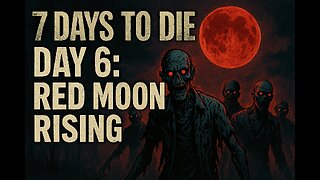 LIVE
LIVE
DynastyXL
1 hour ago🌕 Day 6 Prepare For HORDE With MrsDynasty 🧟 Building a community first 100 Followers! (57/100)
88 watching -
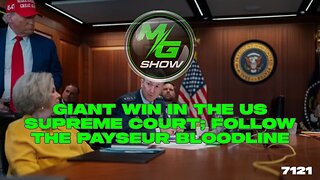 2:37:29
2:37:29
MG Show
21 hours agoGiant Win in the US Supreme Court; Follow the Payseur Bloodline
49.5K16 -
 8:12
8:12
Game On!
12 hours ago $3.17 earnedMy PERFECT Solution for the NCAA March Madness Expansion!
25.1K3 -
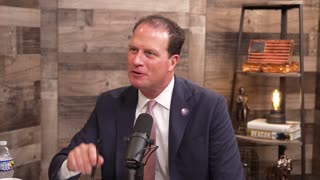 31:45
31:45
RepublicanStudy
18 hours agoOne Big Beautiful Exclusive Conversation with Budget Chairman Arrington
9.21K6 -
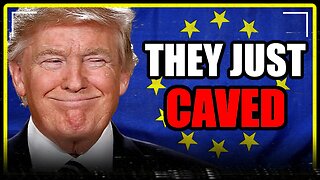 8:28
8:28
MattMorseTV
16 hours ago $14.17 earnedThe EU just SURRENDERED to Trump.
62.7K48 -
 2:09:17
2:09:17
Side Scrollers Podcast
21 hours agoKirsche & Leaflit on HIT LIST + Nintendo RUINS Mario Kart + More | Side Scrollers Live
29.8K7 -
 14:17
14:17
GritsGG
1 day agoCopy Our Strategy We Use to Win & Instantly Improve!
35.7K3 -
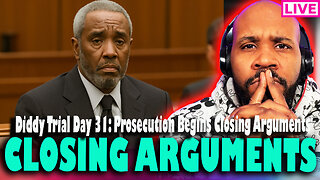 6:08:23
6:08:23
The Pascal Show
21 hours ago $8.93 earnedDIDDY TRIAL LIVE! HERE WE GO! Feds Begin Closing Arguments Trial Day 31 & MORE
32.7K3 -
 3:24:49
3:24:49
GamerGril
10 hours agoTGI-FrightDay | A Gril Among Us
43K11 -
 1:19:26
1:19:26
Man in America
16 hours agoIs MAHA Pushing the WEF’s Wearable Agenda? w/ Dr. Ealy
138K110